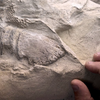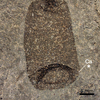Neolithic Vegetarians: Learn About the Wooden Tools Used by Early Humans!

The wooden tools recovered by the researchers
Post Author- Ellis Nolan
When you think of the Stone Age, scenes of Neanderthals chasing down great beasts of old for food and furs might come to mind. Many studies have shown the invention and development of stone tools were essential to early humans’ efforts to hunt animals, but according to a recent study, that perspective may have an overbearing presence in the perception of the Stone Age.
The discovery of a unique set of wooden tools in Southwestern China is changing scientists' perception of early humans. The tools, consisting of various shapes and hypothesized functions, are believed to be around 300,000 years old and are the oldest of their kind to be found in Asia. What sets these particular items apart is that they were likely used mostly for digging and harvesting fruits, vegetables and nuts, as opposed to hunting animals. Not only did researchers find plant starches on the tips of the tools, but they also found the remains of hazelnuts, blackberries, pine nuts, grapes and kiwis in the same dig site.
The age of the tools dates them to what is known as the “Middle Stone Age,” characterized by the beginnings of our species, homo sapiens, as well as improved tool creation techniques. Scientists note that, historically, fewer complex stone tools from this era have been found in Asia as opposed to other areas. However, this study argues that the technological prowess of early humans there was no less complex, it simply wasn’t preserved, since wooden tools decompose far more quickly than stone. Not only that, but the environment of early humans in this area in modern day China was mostly dense jungle, as opposed to grasslands. This environment would have encouraged a more plant-focused diet for early humans, since huntable animals would have been harder to catch.
Popular culture has created specific images of early human tools being mostly used to create fire and hunt animals, but what this study represents is a reminder that the scope of archaeology is often limited by what is preserved. The researchers posit that other early human societies could have also pursued more plant-focused diets, but didn’t use stone tools to harvest plants.
Interested in Early Human tools? Check out our collection here!
Featured Product
Joe Frazier Boxing Glove
Cool Things!

Is “Paul is Dead” Dead?: Unpacking One Of Pop Culture’s Most Enduring Conspiracy Theories

Scientists Discover Hooves and Skin in Preserved Dinosaur "Mummies!"
A dinosaur discovery just in time for Halloween! In a new analysis of a group of fossils from Wyoming, Scientists have determined this group of fossils are dinosaur “mummies,” with preserved skin and even hooves.

Scientists Record a Bat Catching Birds Mid-Flight!
Bats, birds, screeches, oh my! In a reverse-Hitchcock twist, a new study reveals that a species of European bat catches and eats birds mid-flight.
Specimen Deep Dives

The House that Ruth Built: The Story of the Old Yankee Stadium

The Queen of the Skies: the Story of the Boeing 747

Old Ironsides: The USS Constitution and the Start of the U.S. Navy
Long Form Articles

The Artist Behind the Macintosh: Susan Kare and Apple Computers
While the two Steves, Jobs and Wozniak, are the most well known faces behind Apple computers, equally important to the products and culture of the company were those who crafted the experience of using their computers through design. The most notable of these visual architects was Susan Kare, a designer responsible for “humanizing” Macintosh computers.

Can I Lick It? Yes You Can!
Have you ever been unable to tell if a fossil was really a fossil, but you were too embarrassed to admit it? Have you ever wanted to lick a fossil just because, but you didn’t want to risk judgment from your peers? Well, good news! You can kill two birds with one stone! Licking a fossil can actually help you determine if it’s the real deal or just another rock.

Is It Legal To Own a Meteorite: How to Start Your Outer Space Collection!
Meteorites are some of the rarest geological specimens to be found on Earth. Of course, since these stones are not of our world, purchasing them can sometimes be a confusing process. Is it legal to own a meteorite? In short, yes! Read on for help starting your cosmic collection!


















